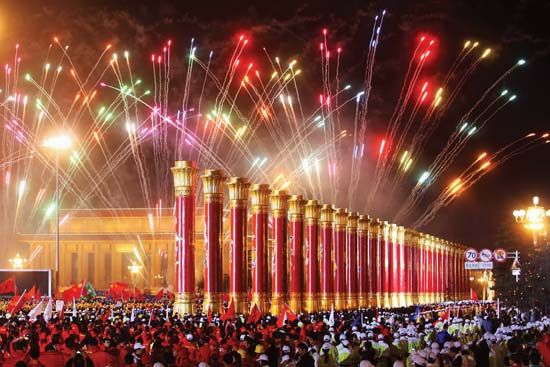
**Fireworks: The Spectacular Chemistry Behind the Explosive Display**
For centuries, fireworks have enchanted people’s imaginations with their stunning bursts of color illuminating the dark night sky. The excitement they generate lies not only in the visual extravaganza but also, for those intrigued by chemistry, in the violent and captivating chemical reactions that create these extraordinary displays.
**The Chemistry of Fireworks**
At the heart of this pyrotechnic art is a straightforward yet powerful principle of chemistry: elements situated in the upper right-hand corner of the periodic table, such as oxygen, chlorine, and fluorine, possess high electronegativity and are hesitant to share electrons. Consequently, compounds that include these elements tend to be unstable and ready to react, often in an explosive manner.
A notable example is **chlorine trifluoride**, a highly reactive compound that eagerly seeks out other substances to interact with, ranging from water to concrete. Its volatility was considered overly dangerous by scientists during the Nazi period.
On the other hand, **oxygen gas** might seem harmless in the atmosphere, yet when ignited with a spark and a fuel source, it combusts, converting into stable compounds like water and carbon dioxide. **Peroxides**, featuring single-bonded oxygen atoms, are even more vigorous due to the relative instability of their bonds, leading to familiar uses like hydrogen peroxide in medicine cabinets and hair salons.
In contrast, **sodium hypochlorite** (bleach) and **nitrate ions** possess distinct reactivity profiles, with applications that range from cleaning agents to components of fertilizers and even explosive formulations like gunpowder.
**Fireworks: From Reaction to Rainbow**
The bright colors of fireworks arise from the addition of metal salts. When these salts are heated, their electrons leap to higher energy levels and emit light as they return to their original state. This light emission, determined by each element’s unique spectra, produces the vivid shades of fireworks: sodium produces yellow, strontium generates a deep red, and so on.
Perchlorates and nitrates serve as oxidizers in fireworks, reacting with fuels to create the explosive force necessary to propel stars (compact flammable pellets) that scatter across the night sky. The incorporation of a dextrin binder not only maintains these elements together but also functions as an extra fuel, amplifying the explosion.
**Environmental Impact and Conclusion**
While the beauty of fireworks is indisputable, their environmental impact sparks debate. Concerns have been raised regarding perchlorate residues remaining in water bodies after displays. However, studies show that microbial ecosystems might alleviate this risk by decomposing perchlorates into harmless substances.
Despite these issues, for many, the sheer wonder of fireworks remains a highlight of summer, a celebration of the marvels of chemistry in all its colorful, explosive splendor. As we come together to experience these displays, we are reminded of not only their aesthetic appeal but also the intricate chemical interactions that make them possible.